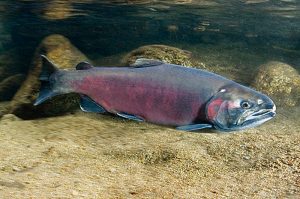Sex in the workplace is a risky proposition at best. Between employees with different status positions, sexual relations are even less wise. When unwelcome or coerced, workplace sex is also illegal. While there’s room to debate whether Tooke acted illegally or broke workplace rules (I don’t think he did) by having consensual sex with a subordinate and supporting her professional advancement, there’s no disagreement that doing so showed very poor judgment. Because Tooke hasn’t been Chief long enough to know whether he’d be missed, I’m ambivalent about his continued tenure.
I’m more concerned with the collateral damage the retired Southern regional forester has done to the government’s confidential system for resolving sexual harassment and other employee-related conflicts and complaints. Ten years ago, the regional forester was Tooke’s superior, as far above him as he was above the employee he was sleeping with. She learned the facts of the Tooke affair, including the disciplinary action taken (a verbal reprimand — not good enough in her view) in the course of her official duties. The fact that Tooke received a reprimand at all is a confidential personnel matter. The fact that the Forest Service investigated Tooke’s sexual activities is a confidential personnel matter. Personnel information of this type is protected by law from disclosure. Whether retired or not, the regional forester had no right to disclose this confidential information to a U.S. Senator. That she could face criminal prosecution or civil damages for doing so is her brief, not mine.
It’s not just Tooke who has been harmed by the regional forester’s zeal to punish a Forest Service bad boy. The “young lady” she expresses concern for has had her privacy violated, too. The “young lady” did not ask to be a pawn in the regional forester’s #metoo tell-all. The “young lady” did not seek to out her former lover, nor did she claim harassment or harm. The government, and its agents (whether retired or not), are barred statutorily and constitutionally (4th Amendment) from investigating her intimate sexual relations or disclosing those facts to a politician or news media.
In her zeal to get Tooke, the regional forester has damaged the cause she claims to believe in. She has impeached the credibility of the Forest Service’s solemn promise that every employee’s personal and confidential information will remain secret — not spread all over tabloid pages, the halls of Congress, or this blog.
I await willieboat007’s response.




